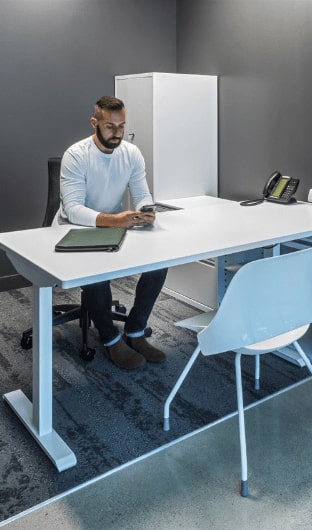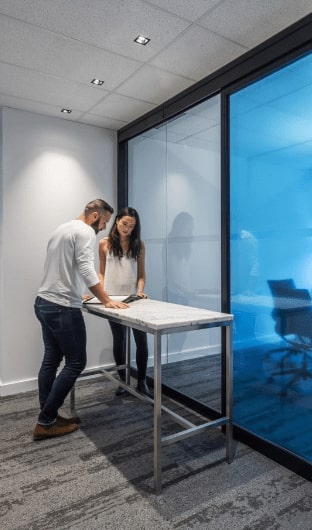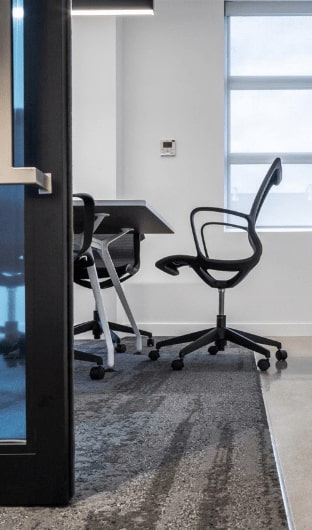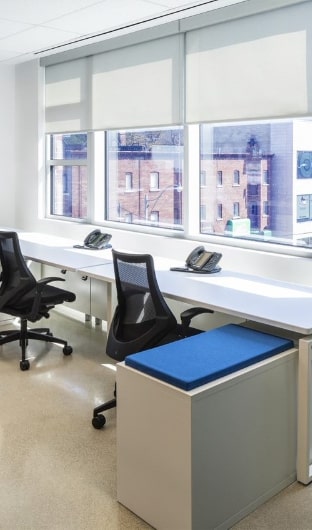
Inclusive Office Furniture Ideas For The Modern Workplace
In today’s modern workplace, the need for inclusive office furniture has become increasingly important. As companies strive to create diverse and inclusive environments, it is crucial to consider the needs of all employees, including those with different physical abilities. Inclusive office furniture, such as adjustable desks and chairs, ergonomic accessories, and accessible workstations, can help accommodate individuals with varying requirements and ensure they can work comfortably and efficiently.
Moreover, inclusive office furniture not only promotes physical well-being but also boosts productivity and morale among employees. When workers feel supported and valued by their employers through the provision of suitable furniture, they are more likely to perform at their best and contribute effectively to the organization. In this latest article from Harkel Office, explore how thoughtful furniture choices can transform your workplace into a more welcoming and accommodating space for all employees.
Understanding Inclusive Office Design
Creating an inclusive office space involves accommodating the diverse needs of all employees. This concept centers on fostering diversity and inclusivity within the workplace and understands that one size doesn’t fit all.
Inclusive office furniture ideas for a modern workplace can include height-adjustable desks to accommodate individuals with different mobility requirements. Ergonomic chairs designed to provide comfort and support are also essential in promoting a healthy workspace environment. Incorporating adjustable lighting options can benefit employees with sensory sensitivities or visual impairments.
Promoting Comfort and Productivity
Providing a variety of seating options such as standing desks or flexible seating arrangements encourages movement throughout the workday, benefiting employees’ physical well-being. Moreover, integrating privacy screens or noise-cancelling panels into workstation design helps create individualized spaces that enhance focus and concentration.
Importance of Inclusive Office Furniture
Supporting Employee Well-being and Productivity
Inclusive office furniture is vital for employee well-being and productivity. It ensures that all employees, regardless of abilities, can work comfortably. For instance, adjustable desks accommodate different height needs, promoting better posture and enabling them to work for long hours.
Enhancing Workplace Culture
Investing in inclusive office furniture showcases a commitment to fostering an inclusive workplace culture. This inclusivity boosts morale and engagement among employees.
Key Principles of Inclusive Office Furniture Design
Ergonomics
Ergonomics, focusing on efficiency and comfort, plays a crucial role in inclusive office furniture design. It ensures that furniture supports the body’s natural posture to prevent strain and discomfort. For example, chairs with adjustable lumbar support promote proper spine alignment. Office ergonomics play a key role in providing better health and comfort to workers and ensuring employee wellness and productivity.
Flexibility and Adjustability
Flexibility and adjustability are vital aspects of inclusive office furniture to cater to diverse body types and preferences. Desks with height-adjustable features allow employees to work comfortably whether sitting or standing. This adaptability promotes better posture and reduces the risk of musculoskeletal issues.
Universal Design Principles
Incorporating universal design principles guarantees that office furniture is accessible to everyone, regardless of their physical abilities. For instance, desks with motorized height adjustments accommodate individuals with mobility challenges. By implementing these principles, workplaces become more welcoming and accommodating for all employees.
Enhancing Accessibility and Mobility in the Workplace
Adjustable Height Desks and Wheelchair-Friendly Layouts
Inclusive office furniture ideas for modern workplaces involve features like adjustable height desks to accommodate employees of different heights. For instance, office desks with adjustable heights can cater to both standing and seated workers.
Incorporating wheelchair-friendly layouts can facilitate ease of movement for wheelchair users within the workspace.
Creating an environment that supports mobility aids such as ramps and elevators is crucial for enhancing accessibility in the workplace. By installing ramps, offices become more accessible to individuals with mobility challenges. Elevators can also provide a convenient way for employees with disabilities to navigate different floors within the building.
Wide Pathways and Clear Signage
Designing wide pathways throughout the office space ensures that all workers can move around freely without obstacles. Furthermore, clear signage indicating directions or room names can help employees easily navigate through the workplace. These simple adjustments contribute significantly to improving overall mobility within the office environment.
Fostering Activity-Based Working Environments
Diverse Spaces
Activity-based working environments provide various spaces like standing desks, collaboration zones, and quiet areas. These areas cater to different work activities and diverse work styles.
Including a mix of spaces in the office encourages movement, creativity, and collaboration among employees. For instance, standing desks promote activity during tasks, while quiet areas offer solitude for focused work.
Enhancing Collaboration
By incorporating collaborative zones in the workplace design, employees have opportunities to brainstorm ideas collectively. These spaces foster teamwork and idea-sharing among individuals within the team.
Transitioning to Accessible, Inclusive, and Ergonomic Workspaces
Conducting Accessibility Audit
An accessibility audit is crucial in pinpointing areas that need improvement in the workspace. By assessing the current setup, organizations can identify barriers that may hinder inclusivity and ergonomic design. For instance, evaluating furniture heights and pathways can help create a more accessible environment.
Collaborating with employees during an accessibility audit fosters a sense of an inclusive workplace. Employees’ feedback and suggestions are invaluable in understanding their diverse needs. This collaboration ensures that changes made align with the requirements of all individuals, promoting a welcoming and inclusive workspace.
Gradual Implementation of Changes
Implementing changes gradually is key to transitioning to flexible workspaces effectively. Creating a detailed project roadmap outlining steps for incorporating new furniture or layouts helps manage the process smoothly. For example, starting with small adjustments like adding adjustable desks before moving on to larger-scale modifications ensures a seamless transition.
Taking incremental steps allows employees to adapt comfortably to new workspaces, reducing resistance or confusion during the transformation process. It also provides an opportunity for continuous feedback from staff members, enabling organizations to make necessary tweaks along the way.
Benefits of Inclusive Furniture Design
Enhanced Comfort and Well-being
Inclusive office furniture in the modern workplace contributes to employee comfort, satisfaction, and overall well-being. When employees are comfortable at work, they are more likely to feel content and happy. This can lead to increased job satisfaction and improved mental health.
Boosted Productivity and Company Culture
In creating a truly inclusive and ergonomic workspace, the design and selection of office furniture can play a pivotal role. By understanding the principles and benefits highlighted, one can transform their workplace into a more accessible and accommodating environment for all employees. Embracing inclusive office furniture not only enhances physical comfort but also fosters productivity and well-being among staff members.
To cultivate a workspace that prioritizes inclusivity and ergonomics, consider implementing the discussed strategies and principles. By doing so, organizations can promote a culture of diversity, equity, and accessibility within their offices. Start the journey towards a more inclusive workplace today with Harkel Office. Connect with our design experts to get started.





